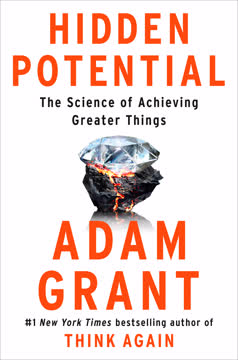Key Takeaways
1. Master THE DIAMOND Model for Effective Communication
THE DIAMOND model demands that the presenter organize every bit of information and content around three sub-topics.
Structured approach. THE DIAMOND model provides a framework for organizing and delivering your message effectively. It consists of several key components:
- Attention Getter: Hook your audience with a compelling opening
- Main Topic: Clearly state your primary message
- Preview: Briefly outline your three sub-topics
- Body: Develop each sub-topic with supporting evidence
- Summary: Recap your three main points
- Conclusion: Restate your key takeaway
- Appeal/Action: Specify what you want your audience to do next
By following this structure, you ensure that your communication is clear, concise, and impactful. The model works for various scenarios, from formal presentations to informal conversations, helping you make your point effectively in any situation.
2. Harness the Power of Non-Verbal Communication
Social scientists tell us that audiences (anyone looking at and listening to you) will derive more meaning from your visual image than from your words.
Beyond words. Non-verbal communication plays a crucial role in how your message is perceived. According to Albert Mehrabian's study, the impact of a message is:
- 55% visual (body language, facial expressions)
- 38% vocal (tone, pitch, volume)
- 7% verbal (actual words)
To enhance your non-verbal communication:
- Maintain strong eye contact
- Use confident body language (posture, gestures)
- Employ facial expressions that match your message
- Modulate your voice (pace, volume, inflection)
- Dress appropriately for your audience and context
By mastering these non-verbal cues, you can significantly increase your persuasiveness and credibility as a communicator.
3. Simplify Your Message for Maximum Impact
More information doesn't mean better information. The Gettysburg Address had only 261 words.
Clarity through brevity. In today's information-saturated world, simplicity is key to effective communication. To simplify your message:
- Focus on one main idea or objective
- Use clear, concise language
- Avoid jargon and buzzwords
- Employ the "rule of three" for main points
- Illustrate complex ideas with analogies or stories
- Use visuals sparingly and effectively
Remember, your audience's attention is limited. By distilling your message to its essence, you increase the likelihood that it will be understood and remembered.
4. Engage Your Audience with Compelling Delivery Techniques
Great speakers can mesmerize us and have us hang on every word as they manipulate us with their pauses and timing.
Dynamic delivery. Engaging your audience goes beyond the content of your message. To captivate your listeners:
- Vary your vocal tone and pace
- Use strategic pauses for emphasis
- Incorporate storytelling and personal anecdotes
- Ask rhetorical questions to involve your audience
- Use humor appropriately
- Employ vivid language and imagery
- Demonstrate passion and enthusiasm for your topic
By mastering these techniques, you can transform a mundane presentation into a memorable experience for your audience, increasing the impact and retention of your message.
5. Anticipate and Handle Questions with Confidence
Time spent listing potential questions and forming answers will pay rich dividends.
Preparation is key. Effective Q&A handling enhances your credibility and reinforces your message. To excel in this area:
- Anticipate likely questions and prepare answers
- Listen carefully to understand the question's intent
- Bridge to your key messages when appropriate
- Answer concisely, then provide supporting details
- Be honest if you don't know an answer
- Maintain composure when faced with challenging questions
- Use questions as opportunities to reinforce your main points
By preparing for and skillfully handling questions, you demonstrate expertise and build trust with your audience, further solidifying your message.
6. Build Trust and Credibility Through Authenticity
Bring Aristotle to the party and measure all of your communications against his ETHOS, PATHOS, and LOGOS approach. It works.
Trustworthiness matters. Aristotle's principles of persuasion remain relevant today:
- Ethos: Establish credibility through character and expertise
- Pathos: Appeal to emotions and values
- Logos: Use logic and evidence to support your arguments
To build trust and credibility:
- Be genuine and transparent
- Demonstrate knowledge and expertise
- Show empathy and understanding
- Use reliable data and sources
- Admit mistakes and limitations
- Maintain consistency in your messages and actions
- Follow through on commitments
By embodying these principles, you create a foundation of trust that enhances the persuasiveness of your communication.
7. Overcome Common Communication Roadblocks
As we head down the home stretch, it's a good idea to recap the top ten things that keep us from speaking clearly and concisely anyplace anytime.
Identify and address obstacles. Common communication roadblocks include:
- Lack of clarity in your own mind about your message
- Failure to structure your communication effectively
- Not considering the audience's perspective or needs
- Information overload and tangential discussions
- Poor listening skills
- Ineffective use of visual aids
- Lack of preparation for questions or objections
- Overuse of qualifiers and filler words
- Failure to adapt to different communication styles
- Neglecting non-verbal cues
To overcome these obstacles:
- Clarify your message before speaking
- Use THE DIAMOND model to structure your communication
- Focus on the audience's needs and interests
- Simplify and prioritize your key points
- Practice active listening
- Use visual aids judiciously to enhance, not replace, your message
- Prepare thoroughly for potential questions and objections
- Eliminate unnecessary qualifiers and filler words
- Adapt your communication style to your audience
- Pay attention to and improve your non-verbal communication
By addressing these common roadblocks, you can significantly enhance your ability to communicate clearly and persuasively in any situation.
Last updated:
Review Summary
Make Your Point! receives generally positive reviews, with an average rating of 3.66 out of 5. Readers appreciate its clarity, practicality, and concise presentation. Many find the book helpful for improving communication skills, particularly in public speaking and presentations. The "Diamond" method is highlighted as a useful tool. Some readers feel the content is basic, while others praise its simplicity and effectiveness. Critics note that the book may be more beneficial for those with less experience in communication. Overall, readers value the book's straightforward approach and practical tips.
Similar Books










Download PDF
Download EPUB
.epub digital book format is ideal for reading ebooks on phones, tablets, and e-readers.




